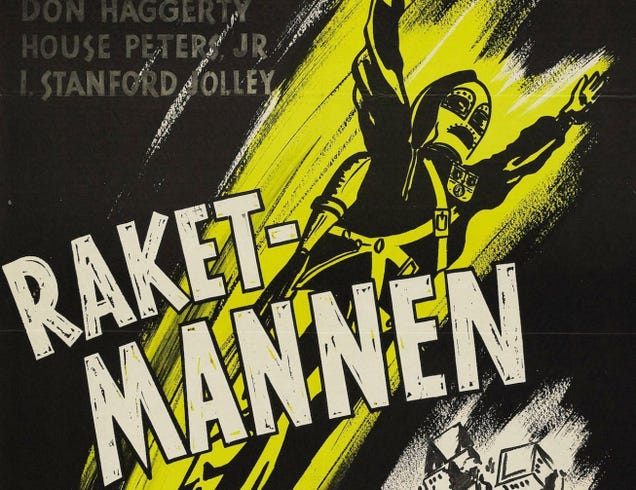
TV doesn’t get much respect. It rots your brain and grows couch potatoes. But the so-called idiot box also swings elections, rewires brains, snares criminals, and even sways the Supreme Court. The following may not be the best shows of the last 25 years—in fact, some are among the worst—but their impact reaches far beyond the living room.
1. Tropikanka: The Show That Won a Presidential Election
 As Russians were gearing up to go to the polls in July 1996, Boris Yeltsin was nervous about his job. The weather gave him additional reason to panic. With the sun shining and the temperatures pleasant, Yeltsin fretted that his city-dwelling supporters would decamp to their dachas, or country cottages, instead of staying home and voting. Russia’s president needed a way to keep his base from traveling.
As Russians were gearing up to go to the polls in July 1996, Boris Yeltsin was nervous about his job. The weather gave him additional reason to panic. With the sun shining and the temperatures pleasant, Yeltsin fretted that his city-dwelling supporters would decamp to their dachas, or country cottages, instead of staying home and voting. Russia’s president needed a way to keep his base from traveling.
His solution: a cunning use of soap opera. No show was more popular in Russia than the Brazilian morality soap Tropikanka, which regularly drew 25 million viewers to the state-owned network ORT. With the election looming, ORT made a surprise announcement: The show’s finale would air as a special triple episode on election day between 8 a.m. and 11 a.m.
More amazing was the fact that the scheme actually worked. Because most dachas didn’t have televisions, viewers stayed in the city, glued to their sets. When the episode ended, it was too late to trek out of town, but voters still had time to get to the polling station. Yeltsin’s soap opera strategy helped him prevail by more than 10 million votes. Meanwhile, The Young and the Restless can’t even sway a lousy Senate race.
2. Melrose Place: The Show That Turned Prime Time Into an Art Gallery
 You probably remember Melrose Place as a vapid, if enjoyable, look at a Los Angeles apartment complex. But the show had more depth than anyone realized. Starting in 1996, the program served as a highly visible billboard for up-and-coming artists.
You probably remember Melrose Place as a vapid, if enjoyable, look at a Los Angeles apartment complex. But the show had more depth than anyone realized. Starting in 1996, the program served as a highly visible billboard for up-and-coming artists.
Melrose’s foray into the art world was masterminded by conceptual artist Mel Chin. As Chin told the Los Angeles Times in 1997, “Everyone criticizes television, but nobody tries to intervene to give it the meaning it lacks.” Chin founded the GALA Committee to do just that.
When Chin approached Melrose set decorator Deborah Siegel with the idea of dressing the show in avant-garde works, she immediately approved. Together the GALA Committee and Siegel collected pieces from artists around the country and worked them into the show. Each time viewers tuned in for a little trashy fun, they got a hidden dose of culture.
Some of the art was surprisingly subversive. Most famously, when Courtney Thorne-Smith’s character was struggling with an unplanned pregnancy, she spent two episodes hunkered down in a comfy quilt. A closer look revealed it wasn’t just a pretty pattern—it was also the molecular structure of the abortion drug RU-486.
The art world, for its part, embraced the exposure, and in 1997, the Melrose Place pieces were displayed in their own show at the Museum of Contemporary Art in Los Angeles.
3. The Simpsons: The Show That Changed How We Talk

You don’t need to turn on the TV to hear The Simpsons. Just chat with pretty much anyone. As University of Pennsylvania linguistics professor Mark Liberman wrote in 2005, “The Simpsons has apparently taken over from Shakespeare and the Bible as our culture’s greatest source of idioms, catchphrases, and sundry other textual allusions.”
Liberman’s assertion sounds crazy—at least until you remember there’s a Milhouse quote for every occasion. Even the hulking gatekeeper of the language, the Oxford English Dictionary, has found a spot for Homer Simpson’s trademark “D’oh!” Mmmm … linguistic acceptance.
4. America’s Most Wanted: The Show That Cleaned Up America’s Streets
 (YouTube link)
(YouTube link)
America's Most Wanted has helped capture over 1,100 fugitives since its debut in 1988.
5. The Theorists: The Show That Made Us Respect Belarus’s Actors

It’s no secret that television hits get licensed and remade around the globe. So when audiences in Belarus got their own knockoff of The Big Bang Theory in 2010, nothing seemed out of place. Like its American counterpart, The Theorists depicted the adventures of four lovably geeky scientists living next door to a beautiful waitress.
There was just one problem. Although the show was basically a shot-for-shot remake of the American original, Belarus’s version was unlicensed. When Big Bang Theory co-creator Chuck Lorre discovered the theft, he learned he couldn’t sue because Belarus’s government owned the production company. With no other recourse, Lorre chided the plagiarists in a title card, joking that he hoped Belarus would at least “break down and send us some felt hats.”
As it turned out, Lorre didn’t need to barter. When news broke that the show had never been licensed, the actors were mortified—they’d been told it was a legitimate production. Rather than continue to star in a rip-off, they protected their integrity by walking off the set. Left without a cast, the producers had no choice but to cancel The Theorists. The next time we need a scrupulous Eastern European actor, we know where to look.
6. Glee: The Show That Boosted the Record Industry
FOX scored a sleeper hit with the musical series Glee in 2009. But the show’s real impact came between airings. As the rest of the record industry flailed, the Glee recordings found staggering success on iTunes. By the end of 2011, the cast had sold more than 11 million albums and another 36 million single tracks. Meanwhile, the cast’s 2011 concert tour grossed more than $40 million. Forget garage bands—aspiring stars should be shooting garage teen dramas!
7. De Grote Donorshow: The Show That Became an Organ Donor
 This 2007 reality show’s horrifying premise: Three patients in need of a kidney compete for the organs of a terminally ill woman, with the dying woman picking the winner, using input from viewer text messages.
This 2007 reality show’s horrifying premise: Three patients in need of a kidney compete for the organs of a terminally ill woman, with the dying woman picking the winner, using input from viewer text messages.
The show drew an avalanche of criticism before it aired. What could be more twisted than making sick people duke it out for vital organs as TV entertainment? Worse still, who thought that letting the same TV audiences that can barely be trusted to pick the next American Idol make such a harrowing decision? Dutch health officials vehemently condemned the show and attempted to block its airing to no avail.
Like many reality shows, De Grote Donorshow had a twist ending. Near the end of the program, presenters revealed that the show was a hoax to draw attention to Netherlands’s shortage of organ donors. The “terminally ill” woman was a healthy actress. And while the three contestants really did need kidneys, they were in on the stunt to help publicize the problem. BNN’s chairman admitted the gimmick was tasteless but said, “[W]e think the reality is even more shocking and tasteless.”
Crass or not, the effort worked: A day after the airing, 43,000 viewers requested forms to become organ donors.
8. SpongeBob SquarePants: The Show That Rewired Kids’ Brains
 In 2011, Nickelodeon’s favorite anthropomorphic sponge came under fire when a University of Virginia study showed that SpongeBob was hurting kids’ ability to perform basic tasks. The research involved a group of 60 4-year-olds who were asked to spend nine minutes watching an educational cartoon, watching SpongeBob, or coloring. Kids who watched SpongeBob scored significantly worse in tests involving solving puzzles, delaying gratification, and following instructions. The conclusion: rapidly paced TV with quick scene changes had a clear cognitive effect on children.
In 2011, Nickelodeon’s favorite anthropomorphic sponge came under fire when a University of Virginia study showed that SpongeBob was hurting kids’ ability to perform basic tasks. The research involved a group of 60 4-year-olds who were asked to spend nine minutes watching an educational cartoon, watching SpongeBob, or coloring. Kids who watched SpongeBob scored significantly worse in tests involving solving puzzles, delaying gratification, and following instructions. The conclusion: rapidly paced TV with quick scene changes had a clear cognitive effect on children.
When the mainstream media picked up on the research, it decried the show’s mind-melting powers. Nickelodeon fired back that SpongeBob was intended for older kids, not preschoolers. One of the study’s authors even attempted to defend SpongeBob, pointing out that it was just one of many fast-paced cartoons. Her other line of defense was less helpful: She speculated that the program was particularly taxing for kids’ brains because it contained unfamiliar situations, like a talking sponge wearing square trousers. What’s worse, if you ask us, is how it deludes children into thinking they could someday live in a pineapple under the sea.
9. Star Trek: The Next Generation: The Show That Saved a Genre

In the 1980s, hour-long action shows were designed to lose money in their early seasons. Many lost as much as $600,000 per episode before recouping the shortfall with nine-figure syndication deals. But by 1987, action reruns had stopped matching the ratings of their comedic counterparts. As rich syndication contracts dried up, so did networks’ enthusiasm for dropping big money on explosions and gunfire.
Given that climate, even surefire hits like Paramount’s Star Trek spin-off couldn’t generate interest from the major channels. Undeterred, Paramount produced the series anyway and cobbled together its own group of local affiliates who agreed to broadcast the show.
When Star Trek: The Next Generation debuted in October 1987, more than 50 ABC, NBC, and CBS affiliates preempted their networks’ programming to air the two-hour premiere. Cash motivated this unprecedented defection. When local affiliates preempt their networks’ programming, they get to keep all of the ad revenue from the show rather than share it with the network. Paramount gave episodes of The Next Generation to the affiliates for free, but with a catch. Each hour-long show included 12 minutes of ads. Stations could sell five of those minutes and keep the loot; the remaining seven belonged to Paramount.
The deal was incredibly profitable for everyone involved. At a time when most 30-second commercials sold for $30,000, The Next Generation’s strong ratings let Paramount and its affiliates command $115,000. The studio responded by investing more heavily in the show to keep it at the top of the pile. By 1992, each episode had a $2 million budget—nearly double that of a normal network drama—yet it was still one of TV’s most lucrative shows, pulling in $90 million a year in ad revenue for Paramount alone.
Other studios noticed Paramount’s 40 percent return on investment from its network-bypassing model and quickly jumped into the fray with shows like Renegade and Xena: Warrior Princess. By boldly going where no show had gone before, Star Trek: The Next Generation made TV safe for action again.
10. Curb Your Enthusiasm: The Show That Improvised Justice
In 2003, 24-year-old machinist Juan Catalan faced the death penalty for allegedly shooting a key witness in a murder case. Catalan told police that he couldn’t have committed the crime—he was at a Los Angeles Dodgers game at the time. He had the ticket stubs and everything!
When police didn’t buy his alibi, Catalan contacted the Dodgers, who pointed him to an unlikely hero: misanthropic comedian Larry David. On the day in question, David had been filming an episode of Curb Your Enthusiasm in Dodger Stadium. It was a long shot, but maybe Catalan could be seen in the background. When his attorney watched the outtakes, it took just 20 minutes to find shots of Catalan and his daughter chowing down on ballpark dogs while watching from the stands.
Thanks to the footage, Catalan walked free after five months behind bars. And Larry David found one more thing to be self-deprecating about. “I tell people that I’ve done one decent thing in my life, albeit inadvertently,” joked David.
11. Buffy the Vampire Slayer: The Show That Spawned An Academic Discipline
 The TV sets in the ivory towers only have bunny ears for one show: Joss Whedon’s Buffy the Vampire Slayer. The series has been so endlessly dissected and deconstructed by scholars that it’s formed its own loose academic discipline, Buffy Studies. It even has its own peer-reviewed academic journal, Slayage, giving new meaning to the phrase “publish or perish.”
The TV sets in the ivory towers only have bunny ears for one show: Joss Whedon’s Buffy the Vampire Slayer. The series has been so endlessly dissected and deconstructed by scholars that it’s formed its own loose academic discipline, Buffy Studies. It even has its own peer-reviewed academic journal, Slayage, giving new meaning to the phrase “publish or perish.”
Our favorite scholarship from Slayage:
“Buffy the Vampire Disciplinarian: Institutional Excess and the New Economy of Power”
*
“I Hear It’s Best to Play Along: The Poststructuralist Turn in Buffy the Vampire Slayer”
*
“It’s Bloody Brilliant: The Undermining of Metanarrative Feminism in the Season Seven Arc Narrative of Buffy”
*
“Someone to Sink Your Teeth Into: Gendered Biting Patterns on Buffy the Vampire Slayer—A Quantitative Analysis”
12. Friends: The Show That Launched a One-Hit Wonder
Before Friends hit the air in 1994, Natalie Merchant and R.E.M. both turned down the chance to record a theme song written by the show’s musical director. The Rembrandts, however, jumped at the opportunity. As Danny Wilde, front man for the California band, said, “We thought, Why not? Nobody will even know it was us, anyway.”
To the band’s surprise, when Friends aired, fans inundated radio stations with requests for “I’ll Be There for You.” But the track was never a proper song—it was just a 45-second slice of infectious pop. A Nashville radio station solved the problem by looping the jingle for three minutes. The stitched-together tune shot up the charts. When the Rembrandts’ record label pressured them to cut an extended version of the song, they grudgingly obeyed.
 (YouTube link)
(YouTube link)
It was a smart move. The rerecorded single spent 11 straight weeks at the top of the charts and helped move more than two million copies of their album. The group admits that it’s frustrating being known for a song it didn’t write, but there’s an upside to being a well-televised one-hit wonder: The Rembrandts receive performance royalties every time a Friends rerun airs.
13. CSI: The Show That Gave D.A.’s Headaches
By 2006, 70 million Americans were tuning into CSI or one of its two spin-offs each week. That became a real problem for prosecutors. As the show’s popularity grew, jurors started expecting the full CSI treatment in every trial. But in the vast majority of cases, police don’t need CSI-type technology to collar the perpetrator. The tests are expensive and can take weeks, and they tax already overworked crime labs. Circumstantial evidence and eyewitness accounts, on the other hand, can be just as damning for far less money.
Most of the evidence is anecdotal, but prosecutors insist that the CSI effect has raised jurors’ interest in high-tech forensic methods and led to undeserved acquittals. A study by Michigan judge Donald E. Shelton even discovered that investigators were doing unnecessary tests just to make it look like they were giving crime scenes a CSI-level scouring. Real or not, prosecutors fear the effect could cost them an important verdict. Some attorneys now ask potential jurors whether they’re fans of the show as they’re determining who to weed out during jury selection.
14. How I Met Your Mother: The Show That Revolutionized Product Placement

In July 2011, something strange happened on a rerun of How I Met Your Mother. Although the episode airing in syndication had been shot in 2006, a poster in one of the scenes was eerily modern: It was pushing Bad Teacher, a movie that had been in theaters only a few weeks. Did Neil Patrick Harris have a time machine?
The bizarrely prescient ad was the work of SeamBI, a company that has craftily elevated the practice of product placement by digitally inserting new ads into old scenes of syndicated shows. Currently, the company tends to insert posters and billboards as set dressing, but its vision doesn’t end there. SeamBI plans to slice and dice markets so that your television does what the Web has been doing for years—help advertisers target very specific geographic areas. Viewers in New York, for instance, might see a Manhattan-based billboard on an old sitcom, while Delaware viewers could see a completely different one while watching the exact same show.
As Entertainment Weekly pointed out, the scheme makes syndicated shows even more profitable, with How I Met Your Mother opening the floodgates to a whole new world. While the idea of seeing June Cleaver opening up a fridge full of Coke Zero or the Fonz leaning up against a poster for The Hangover 3 still seems laughable, SeamBI knows it’s just around the corner.
15. Sex and the City: The Show That Boosted the Pregnancy Rate
In 2008, a RAND Institute study reported that girls between 12 and 17 who watched Sex and the City and other shows with “high sexual content” were more than twice as likely to become pregnant—a ringing endorsement for enforcing the Mature Audience rating. Of course, all that risqué chatter did some good too. A 2011 Ohio State University study found that undergraduates who viewed an episode of Sex and the City were more than twice as likely to talk to their partners about sexual-health issues.
16. The Mongolian Cow Sour Yogurt Super Girl Contest: The Show That Gave China the Vote
 No show has captured China’s heart the way the Super Girl Contest has. When it debuted in 2004, few would have predicted that the all-female American Idol knockoff would draw 400 million viewers. But while the Chinese people couldn’t get enough of the show, the Chinese government viewed it as a threat. The most popular contestants wore Western-style clothes and gave emotional performances that flew in the face of China’s usual stoicism. What really scared the government, however, was how viewers chose the winner by text message. In a nation where citizens have no say in who will lead them, that sort of exposure to the democratic process seemed dangerous.
No show has captured China’s heart the way the Super Girl Contest has. When it debuted in 2004, few would have predicted that the all-female American Idol knockoff would draw 400 million viewers. But while the Chinese people couldn’t get enough of the show, the Chinese government viewed it as a threat. The most popular contestants wore Western-style clothes and gave emotional performances that flew in the face of China’s usual stoicism. What really scared the government, however, was how viewers chose the winner by text message. In a nation where citizens have no say in who will lead them, that sort of exposure to the democratic process seemed dangerous.
Government mandarins led by culture minister Liu Zhongde blasted the show as “poison for our youth.” And even after regulators stripped the program of its text voting, the venom continued. “We can’t have working people reveling all day in low culture,” Liu said.
This being China, you can probably guess how the story ends. Government censors gave the show the ax following the 2011 season finale. Still, Super Girl managed to give China a real taste of democracy. Not even Simon Cowell could find fault there.
17. Venice: The Show That Won the Web

As Guiding Light sputtered toward cancellation in 2009, fans were distraught. The show was disappearing just as an unlikely super couple was emerging. Single mom characters Olivia Spencer (Crystal Chappell) and Natalia Rivera (Jessica Leccia) were doomed to go off the air without sharing their first kiss.
Luckily, actress Chappell saved the couple by launching the Web series Venice to explore the relationship of two women similar to Olivia and Natalia (dubbed “Otalia”). Actors and crew were so hell-bent on seeing Otalia’s romance that they worked for free. More radically, Chappell defrayed her costs by selling online subscriptions.
After spending chaste months on the air, Olivia and Natalia’s Web counterparts locked lips in the first minute of Venice, and the Daytime Emmy–winning series is now in its third season, proving that love can conquer anything, including viewers’ reluctance to pay for TV.
18. Chuck: The Show That Sold a Lot of Sandwiches
 When NBC’s nerd-spy comedy Chuck looked doomed in 2009, fans embraced commercialism to keep the show afloat. Rather than launch a letter-writing campaign at the end of the second season, die-hard viewers appealed to a higher power: one of the show’s advertisers. Under operation Finale & Footlong, Chuck’s “nerd herd” flooded Subway shops to buy sandwiches. Even the show’s star Zachary Levi got into the action, leading 600 fans to a shop in Birmingham, England.
When NBC’s nerd-spy comedy Chuck looked doomed in 2009, fans embraced commercialism to keep the show afloat. Rather than launch a letter-writing campaign at the end of the second season, die-hard viewers appealed to a higher power: one of the show’s advertisers. Under operation Finale & Footlong, Chuck’s “nerd herd” flooded Subway shops to buy sandwiches. Even the show’s star Zachary Levi got into the action, leading 600 fans to a shop in Birmingham, England.
Amazingly, the ploy worked. Subway liked the business so much that it struck a deal with NBC to sponsor Chuck’s third season, complete with increased product placement. Did fans love seeing the show saturated with sandwiches? Maybe not, but watching Chuck down a foot-long was better than not watching Chuck at all.
19. Designing Women: The Show That Transcended Politics
 Dixie Carter’s character on Designing Women, Julia Sugarbaker, was known for her frequent monologues praising liberal causes. Offscreen, however, Carter was a staunch Republican and found the diatribes repulsive. When the actress finally put her foot down, refusing to extol Democratic values, the show’s producers crafted a bizarre agreement. Each time Carter gave one of her character’s trademark rants, she got to sing a song in a future episode. If only Congress would learn to make such compromises.
Dixie Carter’s character on Designing Women, Julia Sugarbaker, was known for her frequent monologues praising liberal causes. Offscreen, however, Carter was a staunch Republican and found the diatribes repulsive. When the actress finally put her foot down, refusing to extol Democratic values, the show’s producers crafted a bizarre agreement. Each time Carter gave one of her character’s trademark rants, she got to sing a song in a future episode. If only Congress would learn to make such compromises.
20. Fei Cheng Wu Rao: TV Killed the Energy Star
China’s Fei Cheng Wu Rao (“If You Are the One”) is a pretty standard dating show. It won’t find any love with Beijing’s air-quality monitors, though. On a 2010 episode, a suitor asked 22-year-old Ma Nuo whether she would ride a bike with him on a date. Ma’s withering response: “I’d rather cry in a BMW than laugh on a bicycle.” The catchphrase went viral, and it cemented the bike’s reputation as Beijing’s ultimate no-status symbol. And with air pollution and auto gridlock both up, there’s a lot to cry about in your BMW.
21. ER: The Show That Made Us Healthier

ER did more than make George Clooney a superstar. It also changed the way America ate. In three 2004 episodes, the show explored a minor plot arc about a teenager who learns he has high blood pressure. The show’s physician characters advise the young man to exercise and eat more fruits and vegetables.
While the plot sounds humdrum, it scared viewers straight. In 2007, researchers from the University of Southern California’s medical school published a paper in the Journal of Health Communication that found that viewers who caught these episodes of ER had started walking or exercising more, eating more fruits and vegetables, or getting their blood pressure checked. How can anyone say watching TV is bad for you?
22. Days of Our Lives: The Show That Slowed Down the Supreme Court
For years before his 1991 retirement, Supreme Court Justice Thurgood Marshall slipped away from deliberations each day to watch Days of Our Lives. The show wasn’t just a guilty pleasure; it helped shape the justice’s understanding of the world. As Marshall once told Justice William Brennan, soaps teach viewers valuable lessons about life.
23. Baywatch: The Show That Proved David Hasselhoff Is a Genius

When NBC put Baywatch on its fall prime-time schedule in 1989, the network thought it had a hit. How could a showcase for attractive women in swimsuits ever fail? But after the show scuffled in the ratings and took a critical pounding, NBC pulled the plug after just one season.
Nobody knew better than star and executive producer David Hasselhoff that mockery in the States doesn’t preclude success abroad. (Remember, this was a man who had topped Germany’s pop charts.) Hasselhoff and his co-producers bought Baywatch from the studio and re-launched it in first-run syndication.
It didn’t take long for Baywatch to conquer the world. By 1995, the show was being translated into 15 languages and entertaining citizens in 144 countries … including Iran! In fact, the globe-spanning appeal of slow-motion running and scantily clad ladies helped Baywatch surpass Dallas as the most-watched TV show of all time. Not a bad legacy for a critical dud.
24. The 1988 Eurovision Song Contest: The Show That Unleashed Céline Dion on the World

Over 200 million records sold later, her heart is still going on.
25. The Colbert Report: The Show That Won 10 Olympic Medals
 In October 2009, U.S. Speedskating was in dire straits. Its primary sponsor, the Dutch bank DSB, had gone bankrupt just months before the 2010 Winter Games. Worse still, the company hadn’t paid a cent of its pledged $300,000. Luckily for the squad, a savior was about to glide onto the rink.
In October 2009, U.S. Speedskating was in dire straits. Its primary sponsor, the Dutch bank DSB, had gone bankrupt just months before the 2010 Winter Games. Worse still, the company hadn’t paid a cent of its pledged $300,000. Luckily for the squad, a savior was about to glide onto the rink.
On November 2, 2009, comedian Stephen Colbert made a surprise announcement that his show was becoming the team’s primary sponsor. But instead of forking over the cash himself, he asked viewers to make small donations. The money poured in:
The team received more than $300,000 from a pool of 9,000 donors, and it made for a solid investment, as the squad racked up 10 medals at the games.
What prompted Colbert’s sudden compassion for a sport he’d often lampooned? He identified with the team’s ambitious dreams and dwindling bank account. As Colbert told The New York Times, “Believe me, I spent 20 years racking up huge debts pursuing comedy.”
 The article above is from theNovember 2012 issue of mental_floss magazine. It is reprinted here with permissio.
The article above is from theNovember 2012 issue of mental_floss magazine. It is reprinted here with permissio.
Don't forget to feed your brain by subscribing to the magazine and visiting mental_floss' extremely entertaining website and blog today!



 Maggie Koerth-Baker on meme culture's most human failure--and the surprisingly awful injuries the real thing inflicts
Maggie Koerth-Baker on meme culture's most human failure--and the surprisingly awful injuries the real thing inflicts 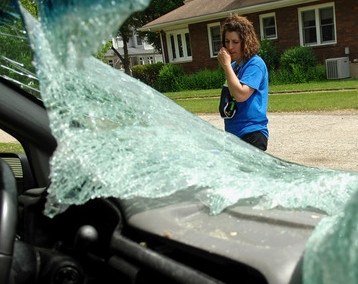




 As Russians were gearing up to go to the polls in July 1996, Boris Yeltsin was nervous about his job. The weather gave him additional reason to panic. With the sun shining and the temperatures pleasant, Yeltsin fretted that his city-dwelling supporters would decamp to their dachas, or country cottages, instead of staying home and voting. Russia’s president needed a way to keep his base from traveling.
As Russians were gearing up to go to the polls in July 1996, Boris Yeltsin was nervous about his job. The weather gave him additional reason to panic. With the sun shining and the temperatures pleasant, Yeltsin fretted that his city-dwelling supporters would decamp to their dachas, or country cottages, instead of staying home and voting. Russia’s president needed a way to keep his base from traveling. You probably remember Melrose Place as a vapid, if enjoyable, look at a Los Angeles apartment complex. But the show had more depth than anyone realized. Starting in 1996, the program served as a highly visible billboard for up-and-coming artists.
You probably remember Melrose Place as a vapid, if enjoyable, look at a Los Angeles apartment complex. But the show had more depth than anyone realized. Starting in 1996, the program served as a highly visible billboard for up-and-coming artists.
 (
(
 This 2007 reality show’s horrifying premise: Three patients in need of a kidney compete for the organs of a terminally ill woman, with the dying woman picking the winner, using input from viewer text messages.
This 2007 reality show’s horrifying premise: Three patients in need of a kidney compete for the organs of a terminally ill woman, with the dying woman picking the winner, using input from viewer text messages. In 2011, Nickelodeon’s favorite anthropomorphic sponge came under fire when a University of Virginia study showed that SpongeBob was hurting kids’ ability to perform basic tasks. The research involved a group of 60 4-year-olds who were asked to spend nine minutes watching an educational cartoon, watching SpongeBob, or coloring. Kids who watched SpongeBob scored significantly worse in tests involving solving puzzles, delaying gratification, and following instructions. The conclusion: rapidly paced TV with quick scene changes had a clear cognitive effect on children.
In 2011, Nickelodeon’s favorite anthropomorphic sponge came under fire when a University of Virginia study showed that SpongeBob was hurting kids’ ability to perform basic tasks. The research involved a group of 60 4-year-olds who were asked to spend nine minutes watching an educational cartoon, watching SpongeBob, or coloring. Kids who watched SpongeBob scored significantly worse in tests involving solving puzzles, delaying gratification, and following instructions. The conclusion: rapidly paced TV with quick scene changes had a clear cognitive effect on children.
 The TV sets in the ivory towers only have bunny ears for one show: Joss Whedon’s Buffy the Vampire Slayer. The series has been so endlessly dissected and deconstructed by scholars that it’s formed its own loose academic discipline, Buffy Studies. It even has its own peer-reviewed academic journal, Slayage, giving new meaning to the phrase “publish or perish.”
The TV sets in the ivory towers only have bunny ears for one show: Joss Whedon’s Buffy the Vampire Slayer. The series has been so endlessly dissected and deconstructed by scholars that it’s formed its own loose academic discipline, Buffy Studies. It even has its own peer-reviewed academic journal, Slayage, giving new meaning to the phrase “publish or perish.” (
(
 No show has captured China’s heart the way the Super Girl Contest has. When it debuted in 2004, few would have predicted that the all-female American Idol knockoff would draw 400 million viewers. But while the Chinese people couldn’t get enough of the show, the Chinese government viewed it as a threat. The most popular contestants wore Western-style clothes and gave emotional performances that flew in the face of China’s usual stoicism. What really scared the government, however, was how viewers chose the winner by text message. In a nation where citizens have no say in who will lead them, that sort of exposure to the democratic process seemed dangerous.
No show has captured China’s heart the way the Super Girl Contest has. When it debuted in 2004, few would have predicted that the all-female American Idol knockoff would draw 400 million viewers. But while the Chinese people couldn’t get enough of the show, the Chinese government viewed it as a threat. The most popular contestants wore Western-style clothes and gave emotional performances that flew in the face of China’s usual stoicism. What really scared the government, however, was how viewers chose the winner by text message. In a nation where citizens have no say in who will lead them, that sort of exposure to the democratic process seemed dangerous.
 When NBC’s nerd-spy comedy Chuck looked doomed in 2009, fans embraced commercialism to keep the show afloat. Rather than launch a letter-writing campaign at the end of the second season, die-hard viewers appealed to a higher power: one of the show’s advertisers. Under operation Finale & Footlong, Chuck’s “nerd herd” flooded Subway shops to buy sandwiches. Even the show’s star Zachary Levi got into the action, leading 600 fans to a shop in Birmingham, England.
When NBC’s nerd-spy comedy Chuck looked doomed in 2009, fans embraced commercialism to keep the show afloat. Rather than launch a letter-writing campaign at the end of the second season, die-hard viewers appealed to a higher power: one of the show’s advertisers. Under operation Finale & Footlong, Chuck’s “nerd herd” flooded Subway shops to buy sandwiches. Even the show’s star Zachary Levi got into the action, leading 600 fans to a shop in Birmingham, England. Dixie Carter’s character on Designing Women, Julia Sugarbaker, was known for her frequent monologues praising liberal causes. Offscreen, however, Carter was a staunch Republican and found the diatribes repulsive. When the actress finally put her foot down, refusing to extol Democratic values, the show’s producers crafted a bizarre agreement. Each time Carter gave one of her character’s trademark rants, she got to sing a song in a future episode. If only Congress would learn to make such compromises.
Dixie Carter’s character on Designing Women, Julia Sugarbaker, was known for her frequent monologues praising liberal causes. Offscreen, however, Carter was a staunch Republican and found the diatribes repulsive. When the actress finally put her foot down, refusing to extol Democratic values, the show’s producers crafted a bizarre agreement. Each time Carter gave one of her character’s trademark rants, she got to sing a song in a future episode. If only Congress would learn to make such compromises.


 In October 2009, U.S. Speedskating was in dire straits. Its primary sponsor, the Dutch bank DSB, had gone bankrupt just months before the 2010 Winter Games. Worse still, the company hadn’t paid a cent of its pledged $300,000. Luckily for the squad, a savior was about to glide onto the rink.
In October 2009, U.S. Speedskating was in dire straits. Its primary sponsor, the Dutch bank DSB, had gone bankrupt just months before the 2010 Winter Games. Worse still, the company hadn’t paid a cent of its pledged $300,000. Luckily for the squad, a savior was about to glide onto the rink. The article above is from the
The article above is from the






 "The Aviator"
"The Aviator" "When Bedime Comes"
"When Bedime Comes" "Ready for a Dive"
"Ready for a Dive" "The Outing"
"The Outing" 










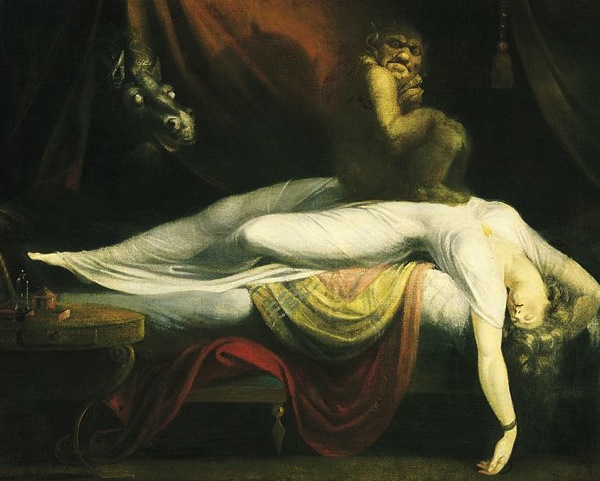


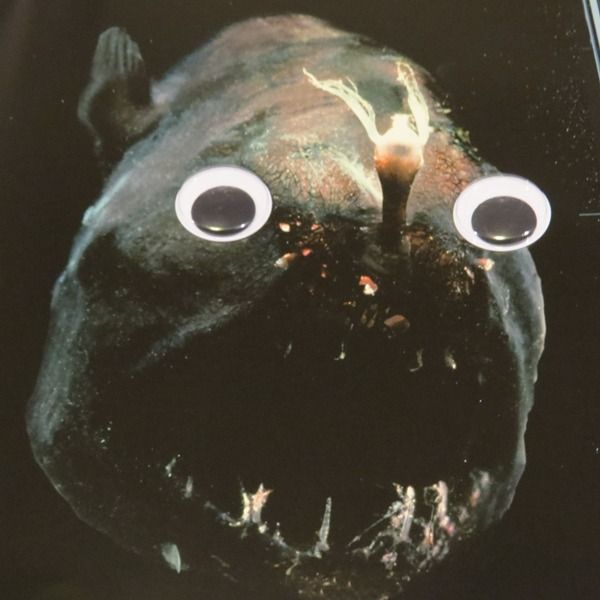






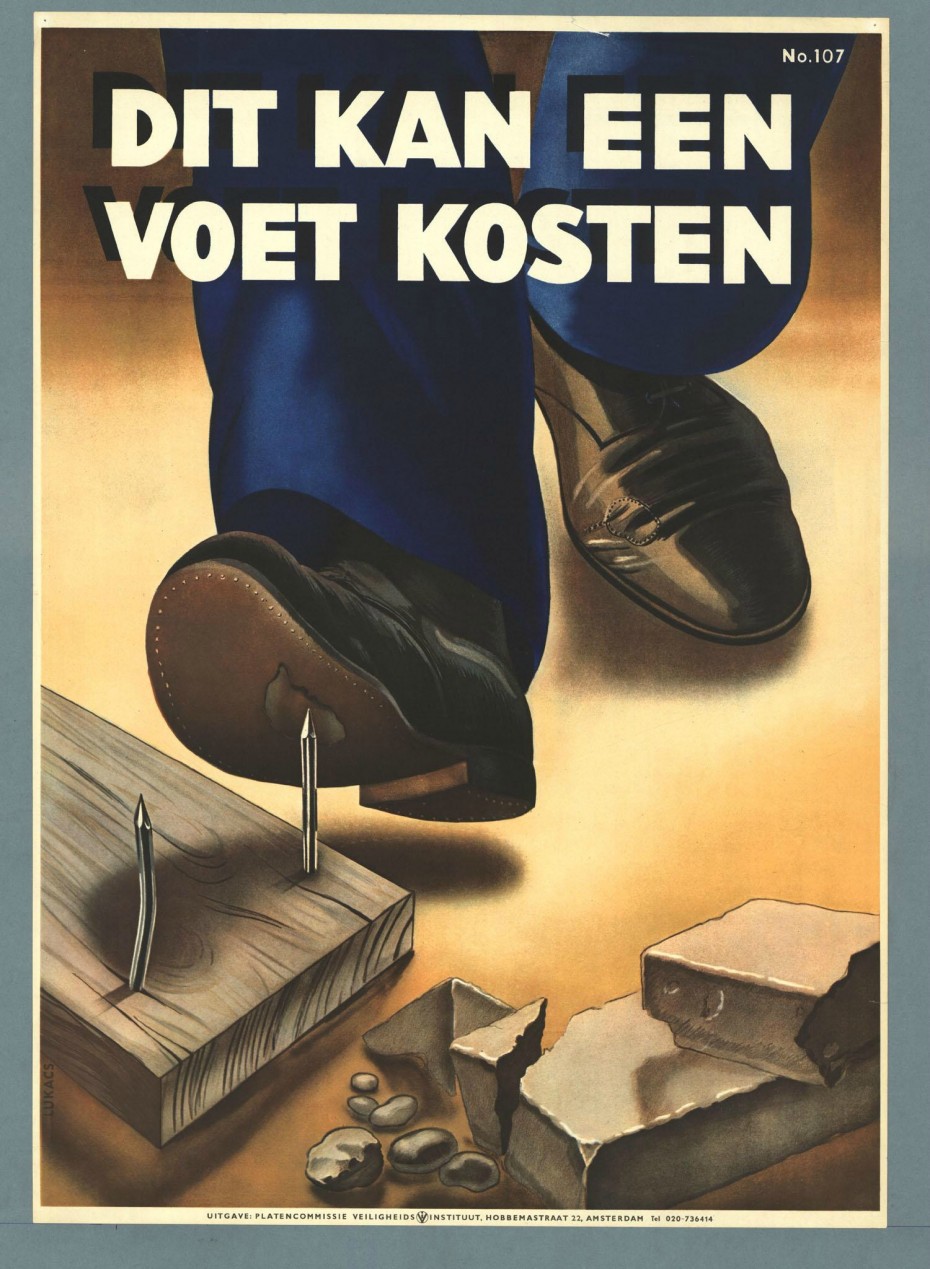
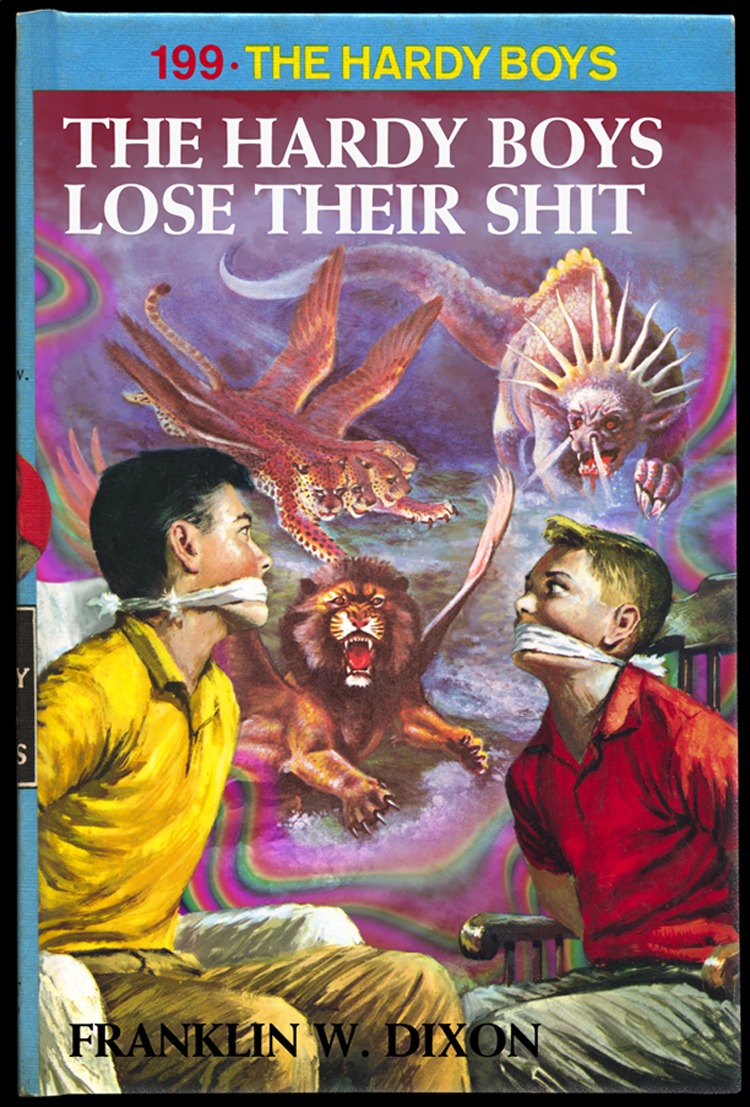 From graphic design genius
From graphic design genius 